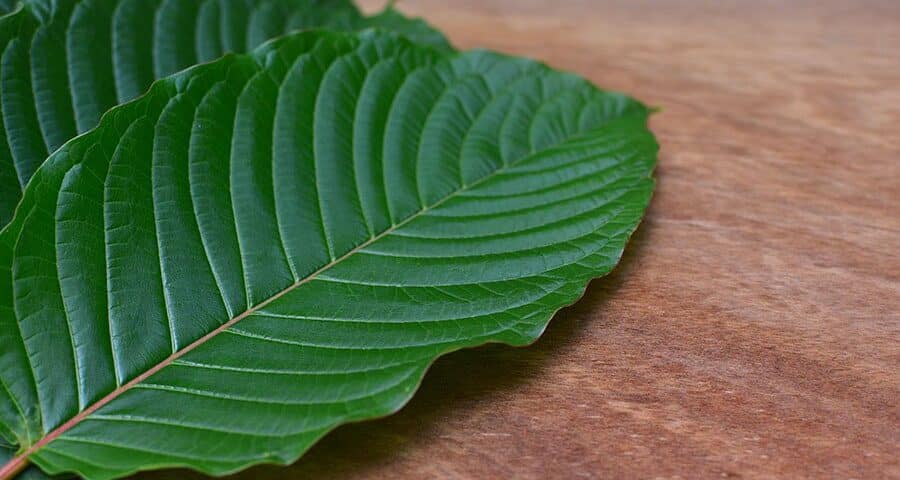
Red Vein Thai Kratom Review: Evening Leisure Strain
May 8, 2020
Common Kratom Buying Scams Buyers Should Be Aware Of
May 22, 2020With kratom growing in popularity, so is the interest surrounding the plant and the products made from it. So, we’ve compiled a list of ten kratom facts if you’d like to learn more about this miracle herb.
10 Kratom Facts for Kratom Lovers
1. The Botanical Name of Kratom Is Mitragyna Speciosa
Plants, algae, and fungi tend to have two types of names: common names that can vary in each language as well as botanical names.
The latter is formal scientific names that are usually in Latin and are universal across countries and languages. So, even if common names vary, the botanical names are always the same.
Botanical names consist of two words a noun that describes the plant genus and a descriptive adjective that represents the species. Two words are used because a plant genus can contain multiple species. For instance, one of the largest plant genera contains around 3000 species.
The scientific name of kratom is Mitragyna speciosa.
“Mitragyna” refers to mitragynine, the alkaloid in kratom that comes in the most abundant quantity. “Speciosa” is a Latin term that has a few different meanings, such as “beautiful,” “splendid,” “brilliant,” “impressive,” and “spectacular.” A beautiful name for a miracle plant!
2. Kratom Is from the Coffee Family
In addition to belonging to a genus, plants also belong to a plant family, a wider group of plants with similar characteristics.
In the case of kratom, it belongs to the Rubiaceae plant family. This plant family is also known as the Madder or Coffee family. Hence, kratom and coffee bush are relatives.
Due to that, the claims that kratom is an opioid or its comparison to cannabis are both inaccurate as the facts state the opposite. Kratom is not a close relative of either.
Cannabis, including hemp, belongs to the Cannabaceae family of the Rose order while the opium poppy belongs to the Papaveraceae plant family. This means that all three plans belong to three different plant families.
Cat’s claw, the flowering gardenia, as well as the South American tree cinchona are members of the Rubiaceae family, as well.
3. Kratom Is Indigenous to Southeast Asia
Kratom trees are native to several Southeast Asian countries, which include Thailand, Malaysia, Indonesia, and Papua New Guinea.
Most of the kratom for sale that you will encounter in the western market comes from Indonesia. In fact, the country accounts for roughly 95% of all kratom on the market.
Most kratom grows on Borneo Island. It’s the third largest island in the entire world. The territory of Borneo houses three countries: Indonesia, Malaysia, and Brunei. However, about 73% of the island belongs to Indonesia. This territory is known as Kalimantan. It is located directly on the equator providing optimal conditions for kratom trees.
4. There Is More than One Type of Mitragyna
The Mitragyna plant genus contains more than just Mitragyna speciosa. There are seven accepted species in the genus. In addition to Mitragyna speciosa, this genus also includes:
- Mitragyna diversifolia (also known as Mitragyna javanica) – an understory tree that grows across China, Thailand, Cambodia, Vietnam, Laos, Burma, and the Philippines. While similar to the speciosa species, it is much lower. This variety is rich in the mitrajavine alkaloid and does not possess the properties of Mitragyna speciosa. It is used for timber.
- Mitragyna hirsute – found in Cambodia, Vietnam, and Thailand. While Mitragyna speciosa is rich in mitragynine and 7-hydroxymitragynine, the most abundant compound in Mitragyna hirsute leaves is mitraphylline, a compound also found in the bark of Cat’s claw.
- Mitragyna inermis – a shrub or a tree that grows across the African continent. It is used as wood as well as dye.
- Mitragyna parvifolia – this Mitragyna species grows across India and Sri Lanka and is used as wood. While it has some of the same alkaloids as Mitragyna speciosa, they are in significantly lower quantities.
- Mitragyna rotundifolia – found in Thailand, Vietnam, Burma, Laos, India, China, and the Philippines, this tree’s primary alkaloids are completely different from those found in other Mitragyna species.
- Mitragyna tubulosa – a Mitragyna species that grows in India and Sri Lanka and is rich in mitracylliatine, an alkaloid different from mitragynine or 7-hydroxymitragynine.
Be Careful What You Buy and Don’t Fall Into Kratom Scam Traps!
As you have observed, the other varieties of the Mitragyna genus do not contain the same alkaloids as does Mitragyna speciosa.
While without doubt, they may possess their own beneficial properties, keep in mind that kratom from locations such as India, Vietnam, or the Philippines is not necessarily the Mitragyna speciosa kratom you may expect. Therefore, be aware of anything like Indian kratom or similar kratom scams.
5. Kratom Has Many Names
Kratom is not the only name that the Mitragyna speciosa has. You can also hear people refer to it as korth, ketum, biak, thom, thang, and kakuam.
6. Kratom Is a Tall Evergreen Tree
Mitragyna speciosa trees are evergreen and can grow up to 25 m or 80 feet tall. Other Mitragyna genus species such as Mitragyna javanica, Mitragyna parvifolia, and others are understory trees, which means that they do not grow as tall. Those species only reach 15 m or roughly 50 feet in height.
Kratom trees have dark green oval-shaped glossy leaves that are the size of an adult male’s hand. Some varieties, such as Horned Leaf kratom, have leaves with spikes across their edges.
7. There Are Three Natural Kratom Types
In nature, kratom leaves can develop red, green, or white veins depending on the circumstances that the kratom trees grew in. These include temperature, sunlight, and moisture. These circumstances result in kratom leaves developing different alkaloids levels, which then affect the color of the veins and stems.
Higher mitragynine levels yield red veins and stems, whereas lower levels result in pale green veins and stems. White veins and stems aren’t actually white, but pale green, which is lighter than veins and stems of green-veined leaves. Moderate levels of mitragynine result in green veins and stems that blend in with the leaf matter.
While you may come across yellow kratom, there is no such thing as kratom leaves with stems and veins that are yellow. Yellow kratom is actually a blend of other kratom vein types that undergoes a different production process and sometimes fermentation.
8. Kratom Is Not Legal Everywhere
Despite the many beneficial properties, some countries, as well as states in the US, have chosen to ban kratom.
In the United States, kratom is illegal in Alabama, Arkansas, Indiana, Vermont, Wisconsin. Various cities and counties in different states have also banned it.
At the same time, a few states such as Utah, Georgia, and Nevada, where we are based, have passed the Kratom Consumer Protection Act, a bill that imposes regulations on kratom products. More states are underway.
9. Kratom Has at Least 40 Beneficial Compounds
The complete profile of kratom is not yet known. More studies are currently happening by the University of Florida College of Pharmacy. A team led by Dr. Christopher McCurdy has received two grants from NIDA to study kratom alkaloids.
At the moment, we do know that kratom has a minimum of 40 different beneficial compounds. However, researchers believe that kratom may have more than that.
10. Mitragynine Levels Can Vary Depending on the Season and Location
For kratom plants to develop high levels of mitragynine, they need to get a lot of sunlight, heat, moisture, nutrients from the soil, and the right location. Without it, kratom is not quite the same.
Some studies have concluded that Mitragyna speciosa trees grown in locations other than Southeast Asia tend to have lower levels of mitragynine or none at all.
If you’ like to learn kratom facts and other information about Mitragyna speciosa, make sure to follow our blog. We regularly blog about different strains, kratom legality, and other facts and information that you mind find useful.






